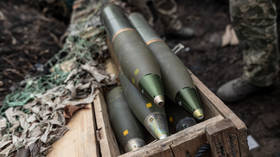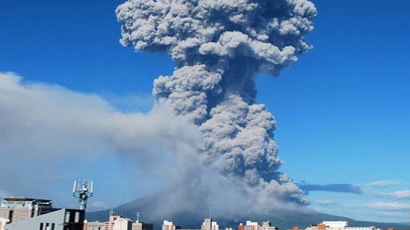Most volcanoes hot enough to erupt ‘less than 1% of the time’ - breakthrough study

Scientists now have a much better chance of finding out if a dormant volcano is about to erupt, after discovering that most of them contain magma that’s hot and liquid enough for an eruption only for a small fraction of their lifetimes.
Kari Cooper of the University of California, Davis and Adam Kent
from Oregon State have published a paper in Nature magazine that
estimates the average temperature of Mount Hood volcano in Oregon
for the past 21,000 years, by studying ancient crystals from
within it.
Historically, volcanoes were thought to be ‘giant vats’ of magma
– molten rocks – that ‘burst’ once the pressure became too high.
But the majority of scientists now believe that most of the time,
the inside of the volcano is too cold and viscous for an
eruption, and that eruptions happen only when hotter magma spurts
up from below, and ‘rejuvenates’ the volcano.
"If the temperature of the rock is too cold, the magma is like
peanut butter in a refrigerator," said Kent.
"At Mount Hood you have cool and rigid magma about five
kilometres below the volcano. All of a sudden some new, hotter
magma rises and mixes with it, heating the whole thing up, making
it easier to move up fractures to the surface."
The eruption can only take place once a certain temperature is
achieved.
According to Kent, "for Mount Hood, the threshold seems to be
about 750 degrees C - if it warms up just 50 to 75 degrees above
that, it greatly decreases the viscosity of the magma and makes
it easier to mobilize."

Armed with this theory, Cooper and Kent studied the content of
the chemical element strontium within the solidified lava from
Mount Hood. Because strontium particles spread out when hot,
seeing their distribution within lava crystals could give precise
information about their temperature history.
They discovered that for 21,000 years the volcano magma was
liquid enough to erupt for less than 3,000 of those years, and
actually probably for less than 140 years.
"We found that Mount Hood magma storage at temperatures high
enough to erupt were rare, occurring at most 12 percent, and
probably much less than one percent of the total time the magma
is in storage," said Kent.
If this is true, this should give a clearer idea of when
volcanoes are dangerous.
"If we do detect a mostly liquid magma body under a volcano, the
probability of an eruption would be higher. This process of
'defrosting' a magma body could happen before we get any other
evidence that an eruption is imminent," said Cooper.
This should be of practical use to volcanologists.
“Modern technology should be able to detect when magma is
beginning to liquefy, or mobilize. Monitoring gases, utilizing
seismic waves and studying ground deformation through GPS are a
few of the techniques that could tell us that things are
warming."
The authors include a caveat that their findings may not be
universal – Mount Hood, which last erupted about 220 years ago,
oozes lava as opposed to expelling it violently, once again due
to its specific magma temperature and mix.
Still, Cooper and Kent believe that their studies could be
relevant for most other volcanoes.
"We've done a little preliminary work by looking at data from
other volcanoes, and it looks like the pattern is pretty common,
so we can infer that other volcanoes work in a similar way most
of the time," said Kent.














